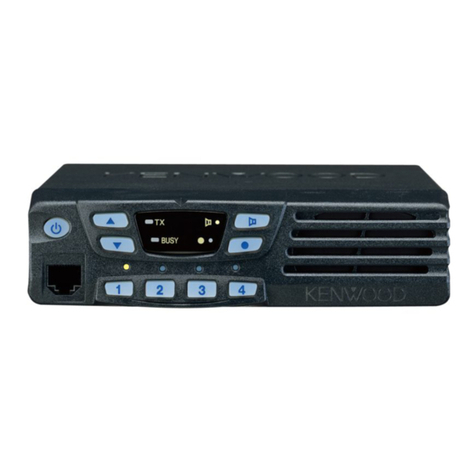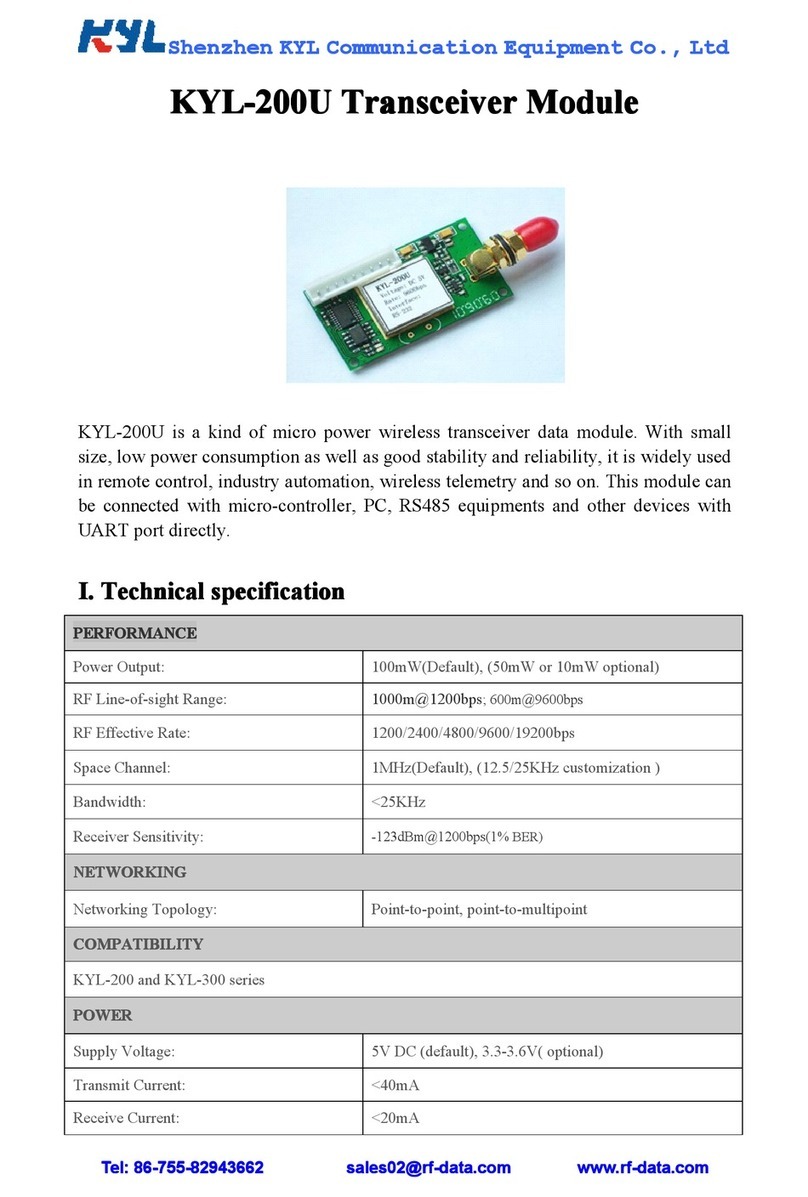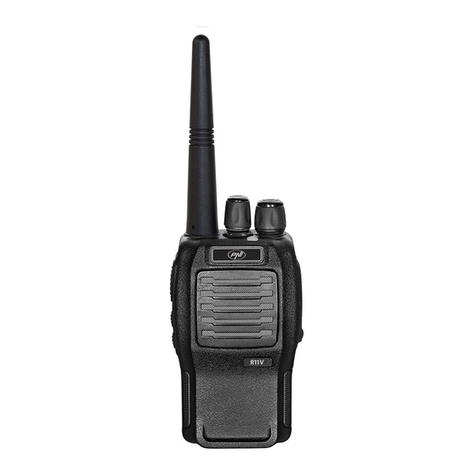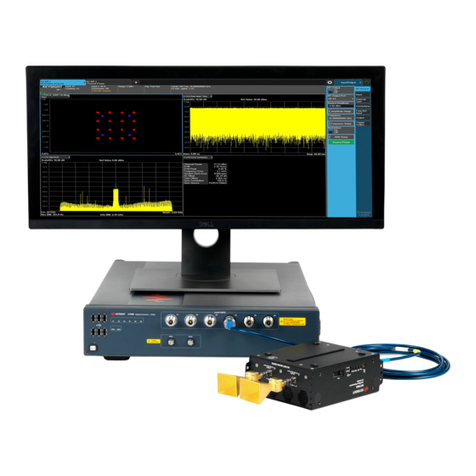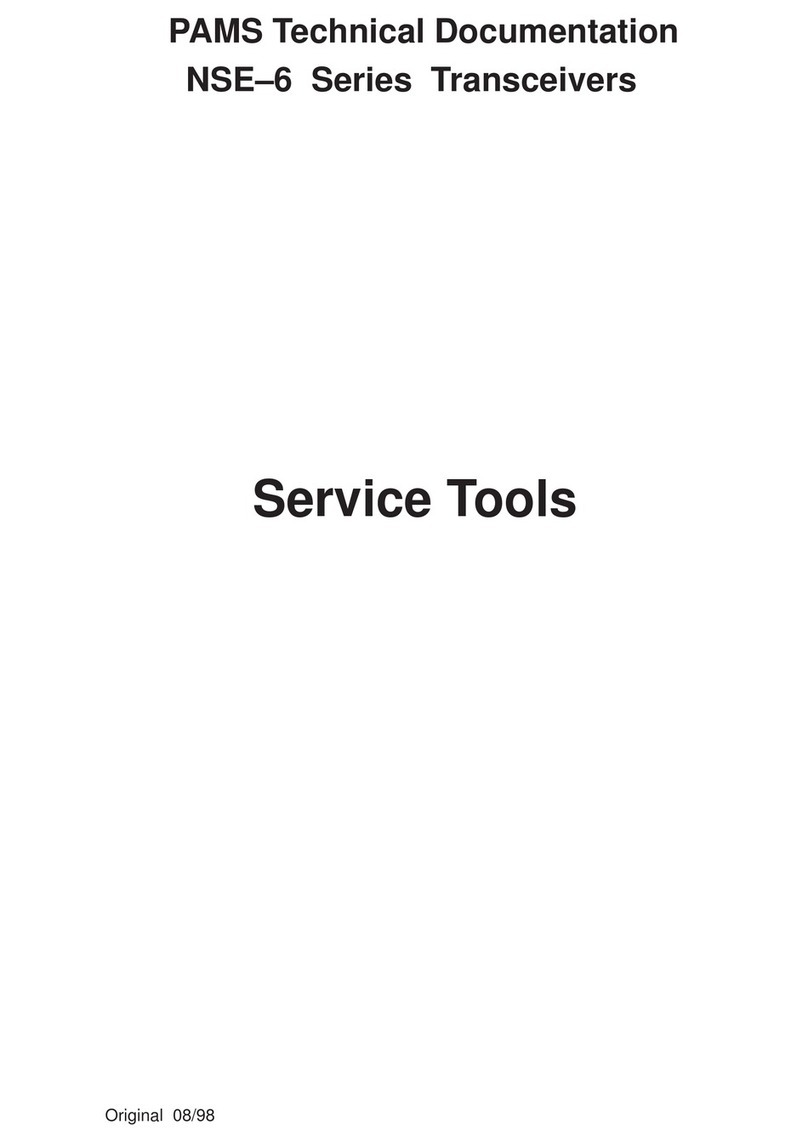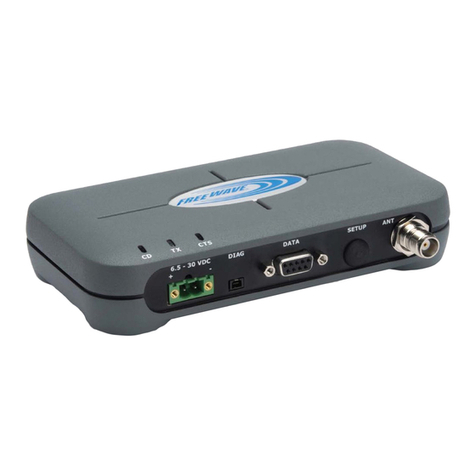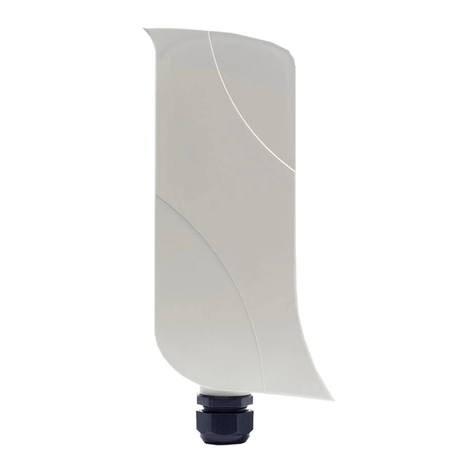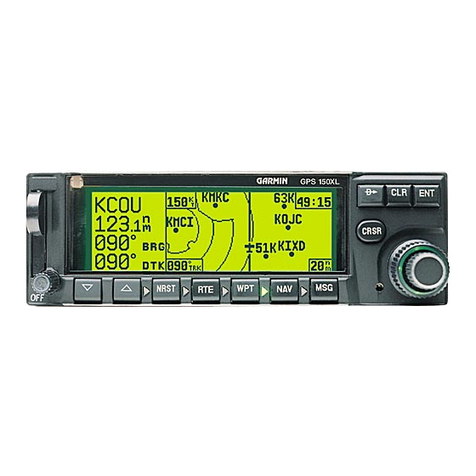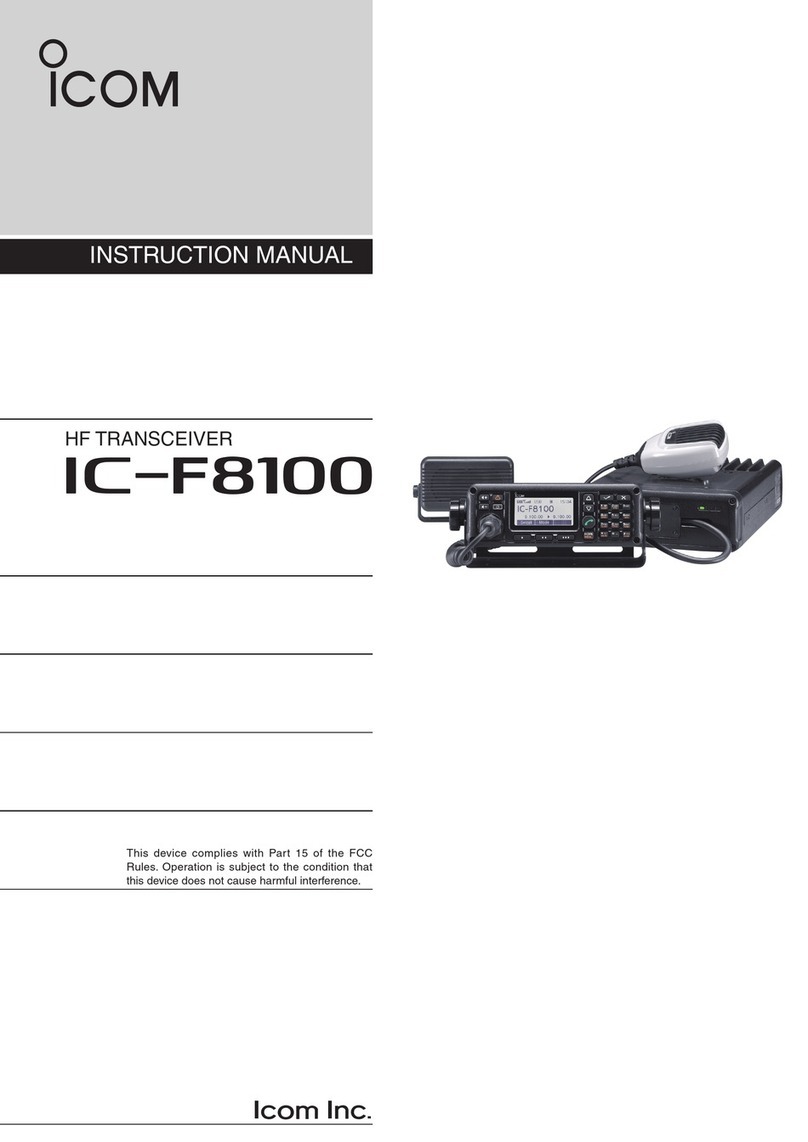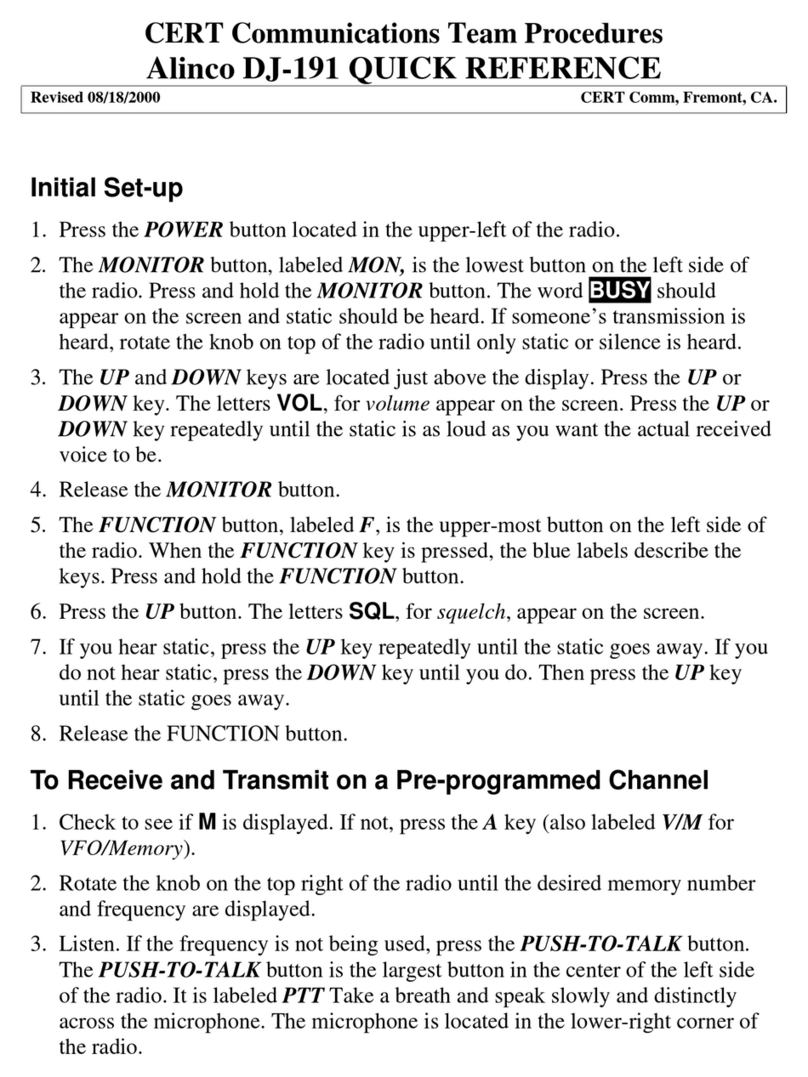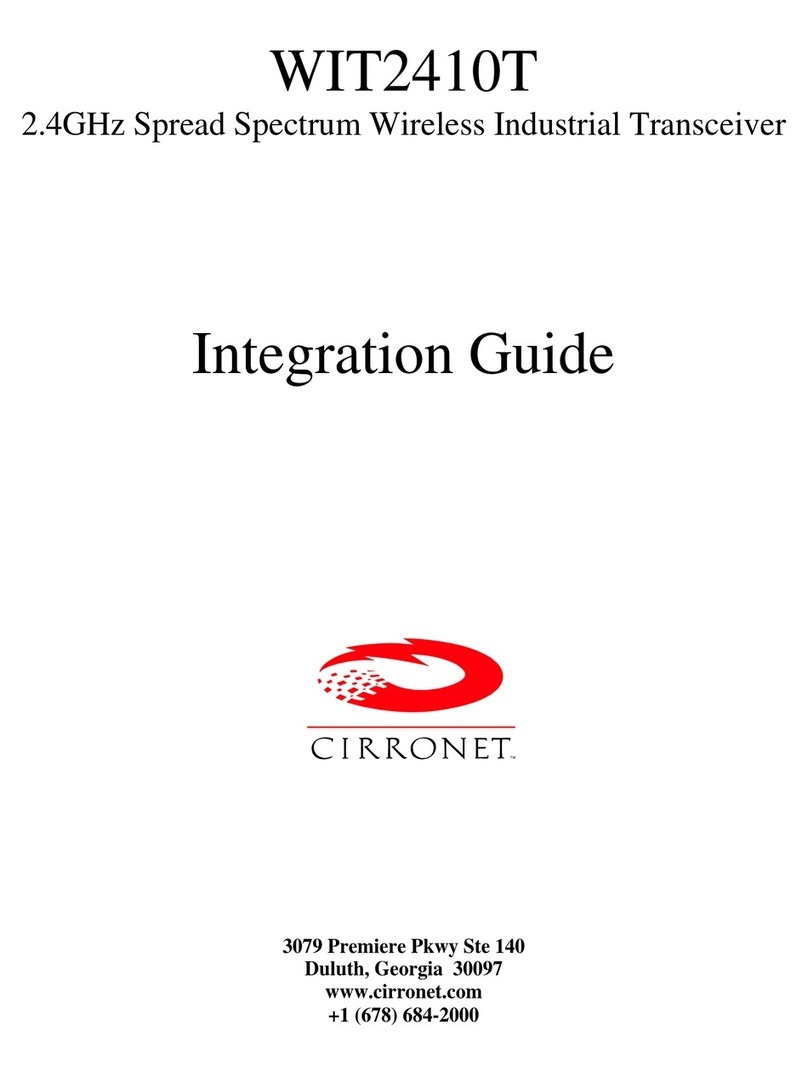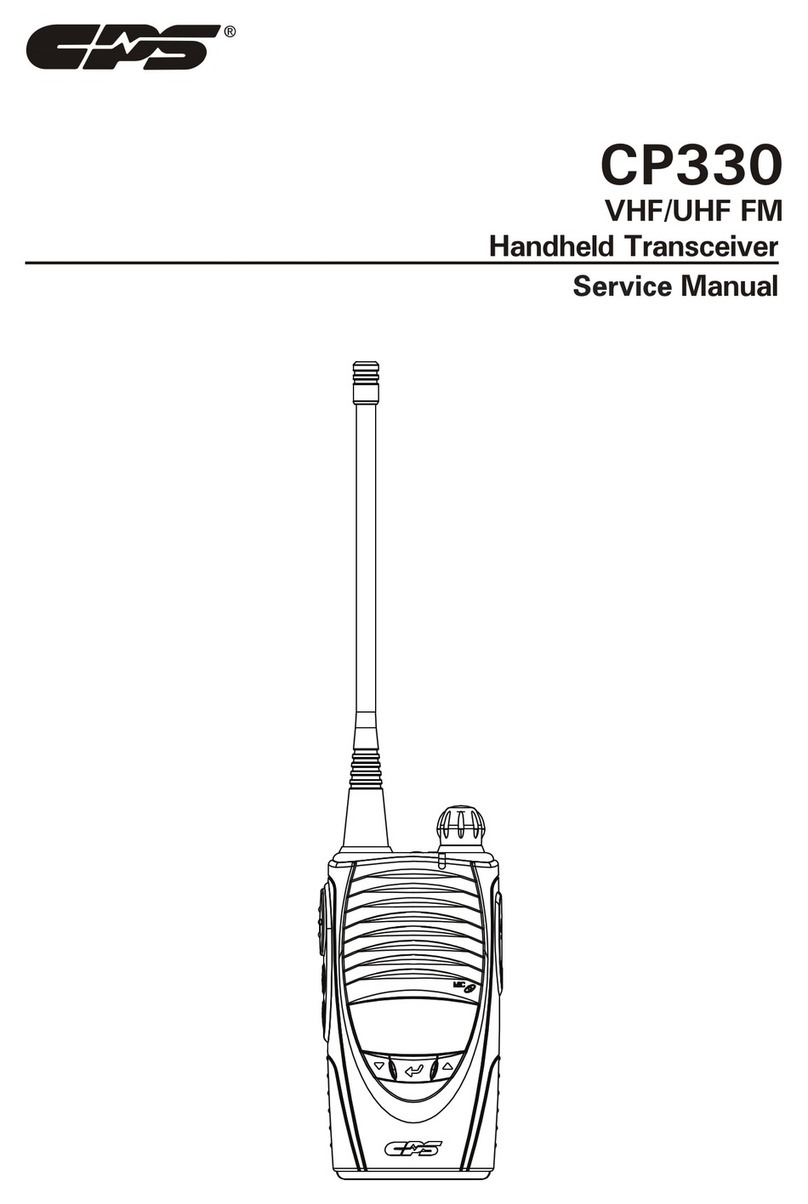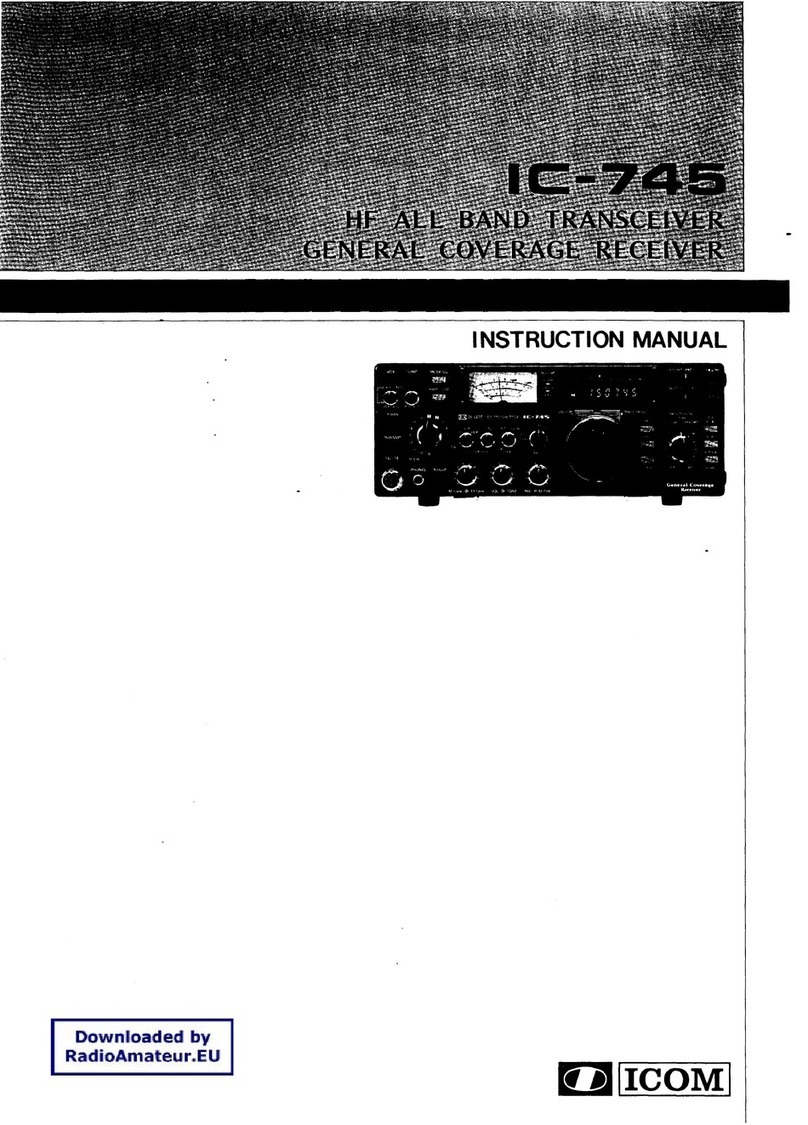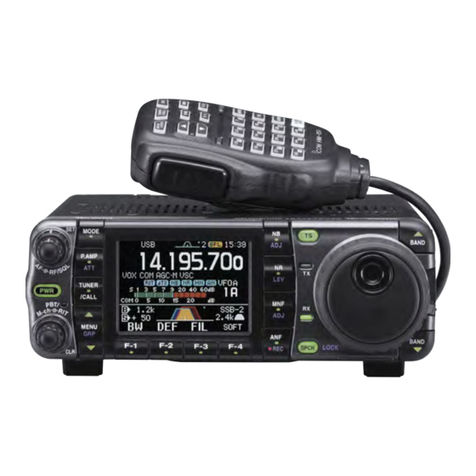Kongsberg cPAP30 User manual

INSTRUCTION MANUAL
cPAP 30 and cPAP 10
Portable Transceiver


cPAP® Portable transceiver
cPAP 30 and cPAP 10
Instruction Manual

Document history
Rev
Date
Written by
Checked by
Approved by
B
10 August 2016
IJG
HAA
SER
Updated information regarding test transducer and added part number for
cPAP 10 in Spare parts section.
Copyright
© 2016 Kongsberg Maritime AS. All rights reserved. The information contained in this
document remains the sole property of Kongsberg Maritime. No part of this document
may be copied or reproduced in any form or by any means, and the information
contained within it is not to be communicated to a third party, without the prior written
consent of Kongsberg Maritime.
Disclaimer
Kongsberg Maritime endeavors to ensure that all information in this document is
correct and fairly stated, but does not accept liability for any errors or omission.
Warning
The equipment to which this manual applies must only be used for the purpose for
which it was designed. Improper use or maintenance may cause damage to the
equipment and/or injury to personnel. The user must be familiar with the contents of
the appropriate manuals before attempting to operate or work on the equipment.
Kongsberg Maritime disclaims any responsibility for damage or injury caused by
improper installation, use or maintenance of the equipment.
Support
All Kongsberg Maritime products:
Phone 24 hour: +47 815 35 355
E-mail: [email protected]
HiPAP, HPR, Transponder, HAIN and ACS:
Phone 24 hour: +47 992 03 808
E-mail: [email protected]
Strandpromenaden 50
P.O.Box 111
N-3191 Horten,
Norway
Kongsberg Maritime AS Telephone: +47 33 03 41 00
Telefax: +47 33 04 47 53
www.kongsberg.com

Instruction Manual
374876/B V
Table of contents
1ABOUT THIS MANUAL........................................................................................1
Registered Trademark................................................................................................1
Manual content...........................................................................................................1
Abbreviations.............................................................................................................1
2SYSTEM DESCRIPTION.......................................................................................2
cPAP Portable transceiver units.................................................................................2
Dunking transducers...................................................................................................3
TDD30V Medium Frequency......................................................................... 3
TDD303 Medium Frequency.......................................................................... 4
TDD180 Medium Frequency.......................................................................... 4
TDD30H Medium Frequency......................................................................... 4
TDD103 Low Frequency................................................................................ 4
Transponder configuration (on-deck) ........................................................................5
Power supply..............................................................................................................5
3TECHNICAL SPECIFICATIONS.........................................................................6
cPAP Portable transceiver..........................................................................................7
Common specifications for cPAP Portable transceiver.................................. 7
cPAP 30.......................................................................................................... 7
cPAP 10.......................................................................................................... 7
Dunking Transducer Unit...........................................................................................7
Serial Line cable.........................................................................................................8
Mains Power cable.....................................................................................................8
4OPERATION............................................................................................................9
cPAP Front panel .......................................................................................................9
Turning unit ON and OFF........................................................................................10
Turning unit ON ........................................................................................... 10
Turning unit OFF.......................................................................................... 11
Setting up the cable drum with the dunking transducer...........................................12
How to open the cable drum......................................................................... 12
How to close the cable drum........................................................................ 13
cPAP APOS Menu...................................................................................................13
APOS Online help........................................................................................ 14
Operation of subsea transponders ............................................................................14

cPAP® Portable transceiver
VI 374876/B
Transponder test and configuration..........................................................................15
TTC Menu .................................................................................................... 15
TTC Menu help button................................................................................. 16
APOS/TTC Switch button............................................................................ 16
Transponder acoustic test (on-deck)............................................................. 16
Transponder configuration (on-deck)........................................................... 17
5MAINTENANCE...................................................................................................18
cPAP unit .................................................................................................................18
Charging the battery.................................................................................................19
Service/Repairs ........................................................................................................20
6SPARE PARTS.......................................................................................................21
Units.........................................................................................................................21
Dunking transducers.................................................................................................21
Cables.......................................................................................................................21
Test transducer.........................................................................................................22
7DRAWING FILE...................................................................................................23
Drawings ..................................................................................................................23
Outline drawing – cPAP unit........................................................................ 24
Outline drawing – Dunking transducer unit................................................. 25
Outline drawing – Dunking transducers with TDD303 MF......................... 26
8INDEX.....................................................................................................................27

About this manual
374876/B 1
1ABOUT THIS MANUAL
This is the Instruction manual for the cPAP® Portable
transceiver unit.
Registered Trademark
cPAP® and cNODE®are registered trademarks, or trademarks
of Kongsberg Maritime in Norway and/or other countries.
Manual content
The manual contains descriptions, specifications, procedures,
spare parts, outline drawings and illustrations on how to operate
and maintain the cPAP Portable transceiver unit.
Abbreviations
APOS
Acoustic Position Operator Station
IP
Ingress Protection
KM
Kongsberg Maritime
LF
Low frequency
MF
Medium frequency
TP
Transponder

cPAP® Portable transceiver
2 374876/B
2SYSTEM DESCRIPTION
This chapter gives an overall description of the cPAP Portable
transceiver unit.
Topics
→cPAP Portable transceiver unit on page 2
→Dunking transducers on page 3
→Transponder configuration (on-deck) on page 5
→Power supply on page 5
cPAP Portable transceiver units
The cPAP Portable transceiver unit is designed to fully operate
subsea transponders from a vessel. The cPAP Portable
transceiver is used together with a dunking transducer.
•The cPAP Portable transceiver is compatible with both
Cymbal and acoustic protocol for positioning and data link
and HPR 400 channels and telemetry.
•Acoustic link for command and data transfer.
•SSBL Range measurement positioning.
•LBL Positioning (optional).
•The cPAP Portable transceiver use full APOS menu.
The cPAP Portable transceiver unit is also used for on-deck
acoustic testing and configuration of the cNODE and
MPT/SPT/MST transponders.
The cPAP Portable transceiver unit is a touch screen/trackball
operated transceiver set in a splash proof portable case with a
carrying handle and shoulder strap. It has an internal
rechargeable battery.
→See the outline dimensions of the cPAP Portable transceiver unit
in Drawing file on page 23.

System description
374876/B 3
Figure 1 cPAP Portable transceiver unit
cPAP 30
The cPAP 30 is designed to
operate, test and configure all
medium frequency (MF)
transponders
cPAP 30 P/N: 367651
cPAP 10
cPAP 10 is designed to operate,
test and configure all low
frequency (LF) transponders
cPAP 10 P/N: 377913
→See chapter Operation on page 9 for more information about how
to operate the cPAP unit.
The unit comes with:
•Serial Line Cable
•Mains cable
Dunking transducers
The Dunking transducer consists of a cable drum with cable and
a dunking transducer.
The cable drum holds 70 m of transducer cable with a transducer
connected to the “outer” end. The other end of the cable must be
connected to the front of the cPAP 30 Portable transceiver unit.
The cable drum is fitted with a handle for cable roll-out/roll-up
on one side and a cable locking-pin on the other side.
TDD30V Medium Frequency
•For use in water depths of 1000 m - 4000 m and with a 30
degree beam width transducer.
•It has a connector for interface with cPAP 30, ACC 401,
ACU 30, TTC400 and TTC 30.
•P/N: 320680

cPAP® Portable transceiver
4 374876/B
TDD303 Medium Frequency
•For use in water depths of 1500 m and with a 50 degree
beam width transducer.
•It has a connector for interface with cPAP 30, ACC 401,
ACU 30, TTC400 and TTC 30.
•P/N: 301518
TDD180 Medium Frequency
•For use in water depths of 500 m and with a180 degree
beam width transducer.
•It has a connector for interface with cPAP 30, ACC 401,
ACU 30, TTC400 and TTC 30.
•P/N: 320822
TDD30H Medium Frequency
•For use in shallow water.
•Beam width is 30 degrees horizontal, medium frequency
transducer on 70 m armoured cable.
•It has a connector for interface with cPAP 30, ACC 401,
ACU 30 and TTC 30.
•P/N: 377463
TDD103 Low Frequency
•A ± 30 degree beam width and low frequency transducer.
•It has a connector for interface with cPAP 10, ACC 401,
TTC400 and TTC 10.
•P/N: 023-220879
→See Dunking transducer outline dimensions in Drawing file on
page 23.

System description
374876/B 5
Transponder configuration (on-deck)
The serial line cable connects a transponder to the cPAP
and is used for transponder configuration such as
changing acoustic mode and default channels and SW
download.
P/N: 355047
Power supply
Mains power cable is used to connect the cPAP to a
standard 115/230 Vac mains supply to recharge the
internal battery.
P/N: 375781

cPAP® Portable transceiver
6 374876/B
3TECHNICAL SPECIFICATIONS
This chapter lists the main technical specification for the TTC.
Topics
→cPAP Portable transceiver on page 7
→Dunking Transducer on page 7
→Serial Line cable on page 8
→Mains Power cable on page 8

Technical specifications
374876/B 7
cPAP Portable transceiver
Common specifications for cPAP Portable
transceiver
Case information
Case dimensions:
386 mm x 488 mm x 185 mm
Weight:
approximately 19.5 kg
Degree of protection:
IP54
→Outline dimensions - see drawing in the Drawing file chapter on
page 23.
Electrical details
Input voltage:
100 to 240 Vac (47 to 63 Hz)
Environmental conditions
Operation (in water) temperature:
-5 °C to + 55 °C
Storage temperature:
-30 °C to +70 °C
Batteries
Number of batteries:
1
Cells per battery:
7
Type of cells:
Lead/Acid
Battery output:
14 Vdc
Transmission power (max):
300 W
Continual use:
approximately 10 hours
cPAP 30
Operating frequency:
Medium frequency (MF)
cPAP 10
Operating frequency:
Low frequency (LF)
Dunking Transducer Unit
Length of cable:
70 m

cPAP® Portable transceiver
8 374876/B
→Outline dimensions/weight - see drawing in the Drawing file
chapter on page 23
Serial Line cable
Length:
5 m
→Outline dimensions - see drawing in the Drawing file chapter on
page 23.
Mains Power cable
Length:
Approx. 2 m

Operation
374876/B 9
4OPERATION
This chapter describes how to start using the cPAP unit
Topics
→cPAP Front panel on page 9
→Turning unit ON and OFF on page 10
→Setting up the cable drum with the dunking transducer on page 12
→cPAP APOS Menu on page 13
→Operation of subsea transponders on page 14
→Transponder test and configuration on page 17
cPAP Front panel
Figure 2 cPAP Front panel
The touch screen is mostly used when performing Acoustic test
and Transponder configuration. All other connections and
buttons are explained below:
AConnector (with protection cap) for Serial line. For
service personnel only. (For program downloads and
configuration purposes).
BConnector (with protection cap) for Dunking transducer
cable.

cPAP® Portable transceiver
10 374876/B
CConnectors for USB and LAN. For service personnel
only. (Connection to network and possible APOS/PC
program download via USB.)
- Placed behind a waterproofed cover. Turn the pegs
to lift cover.
DPower ON/OFF switch.
GTrackball - used to position the cursor on the screen.
Left button: Used to click on buttons, operate menus and
select displayed symbols.
Right button: Used to display menus and pop-up
windows.
HStand-by wake up, with two LEDs indicating status.
IDisplay light (-/+) adjustment.
JPower connector - male 3-pins connector for the mains
cable.
- This cable (see L) is used to connect the TTC to a
standard 230 Vac mains supply, to recharge the
internal battery.
KGas lift springs.
LBattery charge cable in lid folder - supplied with the unit.
MBattery status indicator. The battery should last for approx.
3 hours of continual use.
Turning unit ON and OFF
Turning unit ON
1Disconnect the cPAP power cable from charging station.

Operation
374876/B 11
2Place the cPAP Portable unit in a suitable location and
open the lid by pressing the handle knobs and pull the
handles towards you.
Figure 3 Opening the cPAP portable case
3Place the cable drum close to the cPAP.
4Prepare the cable drum for operation.
-See description in Figure 6.
5Pull out the transducer cable and lower the dunking
transducer into the sea to a depth at least 10 m below the
lowest part of the platform's/vessel's keel or thrusters.
-If required - use the handle to reel out the cable.
6Connect the transducer cable to the connector marked TD
on the top right hand side of the screen of the cPAP.
7Turn on the cPAP Portable transceiver unit by turning on
the main power switch ON in order to start the PC
program (starting up the system will take approx. 1.5
minutes).
The system is now ready for use!
Turning unit OFF
1Switch ON/OFF button (D) to OFF position (see cPAP
Front panel on page 9).
→See APOS Menu on page 13 for more information

cPAP® Portable transceiver
12 374876/B
Setting up the cable drum with the dunking
transducer
How to open the cable drum
AD
F
BC
B
EG
(Cd34033)
Figure 4 Cable drum with transducer
1Pull the locking clip (A) towards you to open the unit.
2Fold out the handle (F).
3Lift up the cover (D).
-The cable for cPAP connection is placed inside the
drum - behind the cover (D).
4Pull out the cable (E).
5To unlock the transducer cable, unlock the locking-pin, by
turning the locking-knob (G) into vertical position.

Operation
374876/B 13
How to close the cable drum
Note Wash the unit, cable and transducer before storage.
1Use the handle to reel in the transducer cable.
2Place the transducer in the basket.
3Push the cable locking-pin into position and lock the cable
by turning the locking-knob (G) into horizontal position.
4Fold the handle (F) into position.
5Press the two bars (B) together and push the locking clip
(C) into position.
6Roll-up the cable (E), and place it inside the drum.
7Close the cover (D).
cPAP APOS Menu
Figure 5 cPAP APOS Menu

cPAP® Portable transceiver
14 374876/B
The main APOS menu is shown in Figure 7 with an on-the-
screen keyboard make the operation easier.
→See APOS Online Help on page 14 for more information about
APOS operation.
APOS Online help
Figure 6 APOS Online help
The APOS Online help button is located on the right hand side
toolbar on the top of the page.
1Select Help on the toolbar.
2Select Help from the dropdown menu.
3APOS Online help will appear on the screen.
Operation of subsea transponders
→Refer to APOS Online help for more information.
This manual suits for next models
1
Table of contents
Other Kongsberg Transceiver manuals
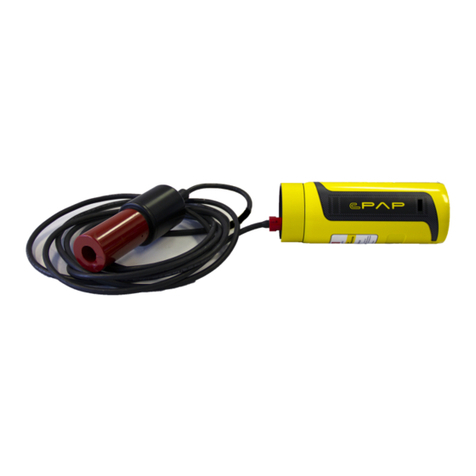
Kongsberg
Kongsberg cPAP MKII User manual

Kongsberg
Kongsberg SIMRAD WBT MINI User manual
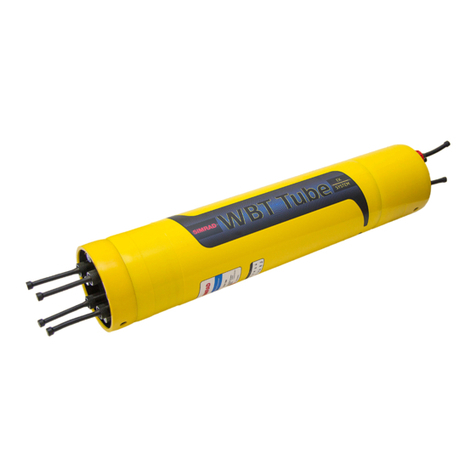
Kongsberg
Kongsberg SIMRAD WBT TUBE User manual

Kongsberg
Kongsberg SIMRAD IS15 Expander User manual

Kongsberg
Kongsberg SIMRAD IS15 Expander User manual
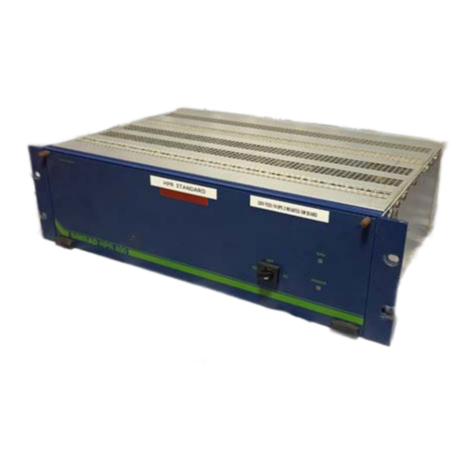
Kongsberg
Kongsberg HPR 400 User manual

Kongsberg
Kongsberg Simrad RS86 User manual
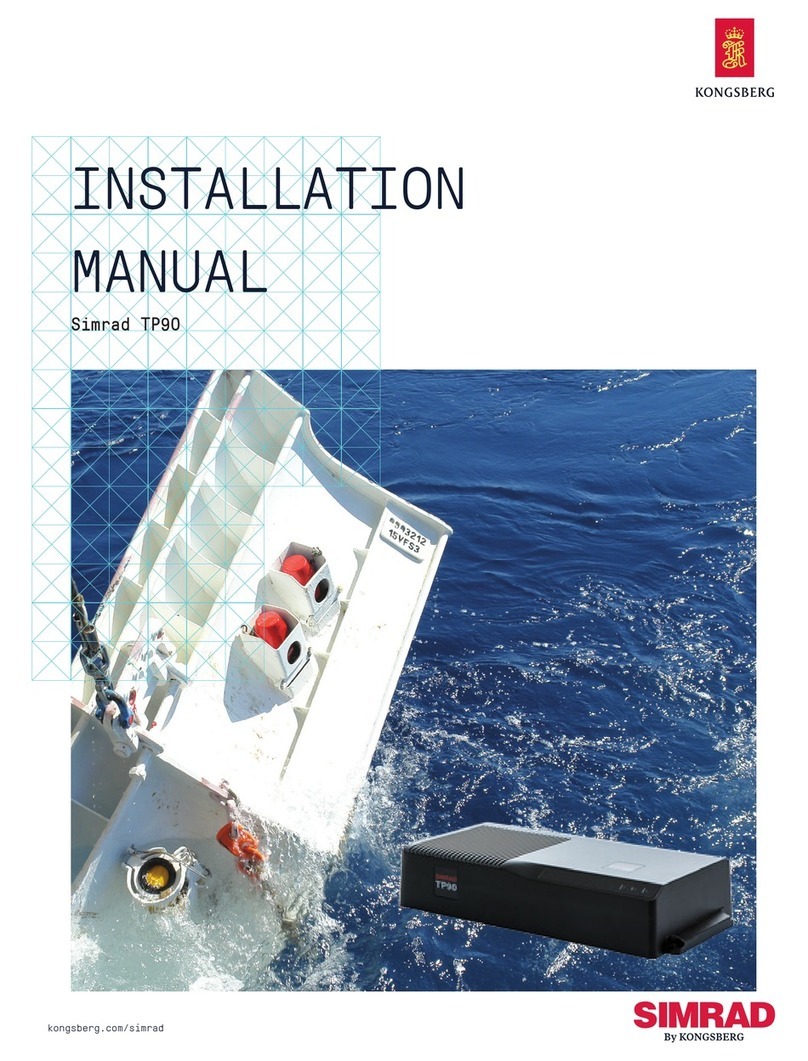
Kongsberg
Kongsberg SIMRAD TP90 User manual
